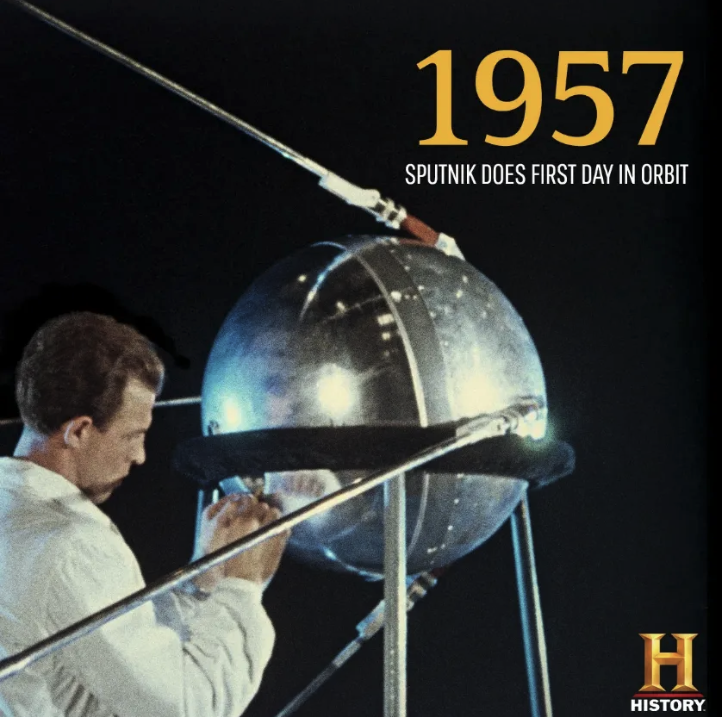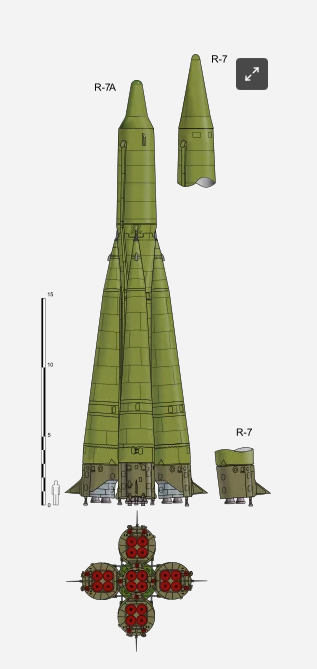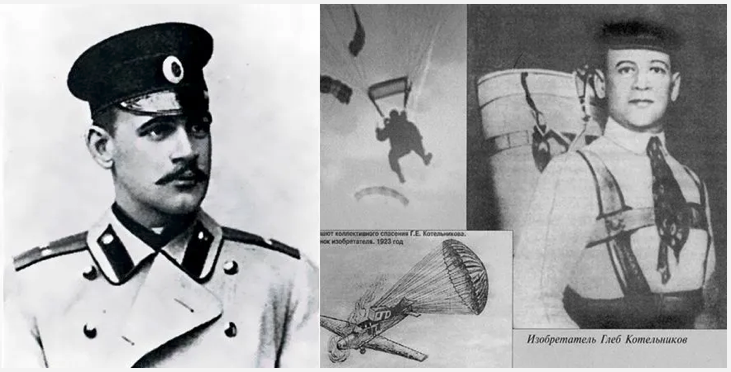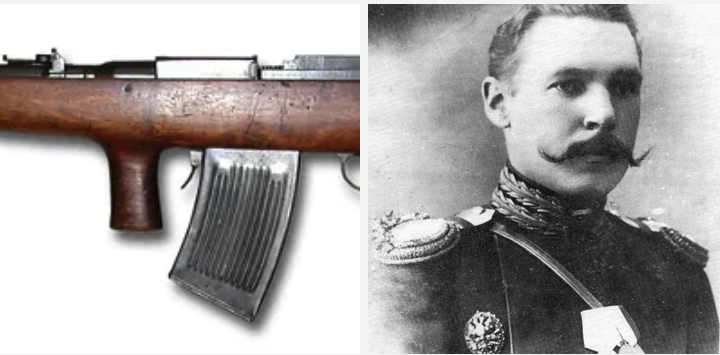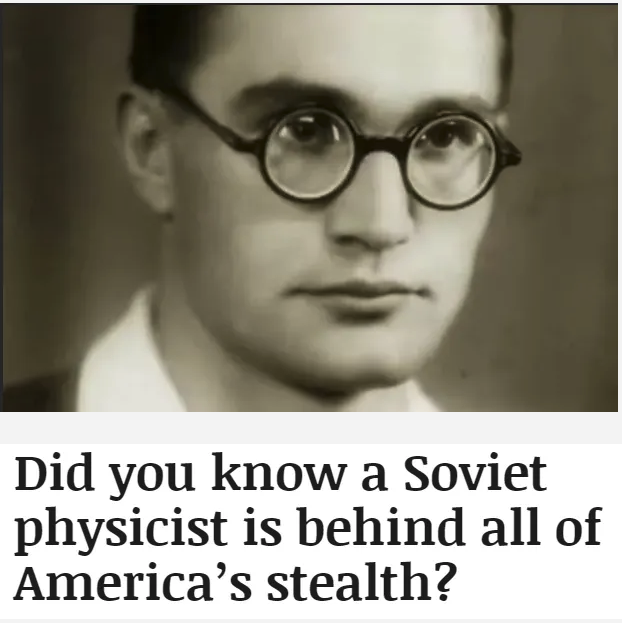A History of Russian Innovation
On this historic date of May 9th, join me in taking a leisurely stroll through the history of Russian achievement.
A History of Russian Innovation
On this historic day of May 9th, join me in taking a leisurely stroll through the history of Russian achievement.
Today, as we celebrate what Russia and the USSR gave to the world with their victory in the Great Patriotic War, I thought it would be timely to look at what they also gave in terms of scientific advancement, inventions, and human achievement.
In the West, it has become a habit to ignore or cloak Russian contributions to the world. Particularly now, the Western ‘world order’ continues to flagrantly erase or obfuscate the truth of Soviet triumph in WW2, and paint themselves the victors—particularly in the European theatre—despite the U.S. not even entering the real war until 1944 (discounting the barely relevant Operation Avalanche slightly earlier), while the USSR had already been fighting it since 1941.
But history is a funny thing. Many of the greatest breakthroughs are shadowed in a haze of half-truths and arbitrary claims. And when there’s any ambiguity, the U.S. invariably gives its own inventors the sweeping benefit of the doubt. But let us uncloak some of these veils, and reveal the truth about the seminal inventions of the 19th and 20th centuries.
The Airplane
Western history books tell us it was invented by the Wright Brothers at Kitty Hawk. But what they fail to mention, are two important things: Firstly, that Nikolay Zhukovsky was the “father of aerodynamics” on whose equations and calculations modern flight was based.
The Kutta–Joukowski theorem is named after him, and is the fundamental theorem in calculating the lift of an airfoil:
He was the first scientist to explain mathematically the origin of aerodynamic lift, through his circulation hypothesis, the first to establish that the lift force generated by a body moving through an ideal fluid is proportional to the velocity and the circulation around the body.
And secondly, Russian inventor Alexander Mozhaysky, had in fact beaten the Wright Brothers to the first powered take off by almost 20 years, but owing to the conveniently chosen semantic declarations between ‘powered take off’ and ‘sustained flight’, Mozhaysky’s invention is swept under the rug to be forgotten. https://en.wikipedia.org/wiki/Mozhaysky%27s_airplane
The famed 1884 test of the Mozhaysky airplane is shrouded in controversy, as western sources are predictably dismissive of it. However, as can be seen, even on the official Wright Brothers website, credit is given: https://www.wright-brothers.org/History_Wing/History_of_the_Airplane/Doers_and_Dreamers/Doers_and_Dreamers_M.htm (bottom of page)
Another source: https://military.wikia.org/wiki/Mozhaysky%27s_airplane#cite_note-AvionXIX-1
Russian newspapers in 1909 had proclaimed his flight as the ‘first powered flight’ in the world. The airplane purportedly traveled roughly 100 feet. Here is a source stating the viability for the plane’s flight, contrary to what some western sources report:
In fact, one of the chief claims to the contrary in the West was that, “Mozhaysky's original aircraft was found incapable of generating lift because of low engine capacity. It was also shown that with a more powerful engine, which Mozhaysky had planned shortly before his death, the aircraft might have been able to fly.”
So, clearly, the plane most likely did achieve a short powered flight of 100 feet (the Wright Brothers’ first initial flights were less than 100 feet) but the going theory is that it would have failed a ‘sustained flight’ due to low engine capacity. In fact, he had already made plans to upgrade the engines from 10hp to new 50hp ones but unfortunately he died before finishing the work, and the project was scrapped. If not for his death, he could have very well achieved the first ‘sustained flight’ as his progress was decades ahead of the Wright Brothers. But even so, the Wright Brothers have the semantic distinction of ‘first sustained flight’ while Mozhaysky had a ‘power assisted take off’ well before them.
What’s interesting is that Western sources fail to mention that the Mozhaysky plane, despite predating the Wright Brothers by ~20 years, had several advancements that paled the Wright Flyer in comparison. Mozhaysky’s design was the first in the world to have “all key components of a modern airplane: fuselage, wing, propulsion, empenage and chassis. (Source)”
In fact, Mozhaysky’s design was ahead of its time and superior to the Wright Flyer in that it had a tail assembly for pitch and yaw control and wheeled undercarriage for landing, while the Wright Flyer had a primitive ‘wing warping’ (pulling ropes which ‘bent’ the wings to make them warp) method of controlling a turn and had no wheels to land. In short, the Mozhaysky plane, in that regard, much closer resembled a modern aircraft design with real pitch/yaw abilities in the tail assembly, whereas the Wright Flyer had to ‘turn’ by having someone pull on a cord which bent the wing in a primitive manner to cause one wing’s shape to ‘deform’ differently than the other, thereby making the plane favor one side.
Fun fact, by the time of the first World War, Russia had the second largest airforce after France, with almost 300 craft, and a Russian pilot by the name of Pyotr Nesterov is recorded as having the first ever combat ‘kill’ of an enemy aircraft in history, inaugurating the age of aerial combat. You can read about it here: https://www.airspacemag.com/daily-planet/first-aerial-combat-victory-180952933/
Astronautics
Russian scientist Konstantin Tsiolkovsky is known as one of the ‘founding fathers’ of astronautics and rocketry.
 Even the official NASA site honors him and lists him as the premier founder of modern astronautics and rocketry along with Goddard and Oberth.https://www.nasa.gov/audience/foreducators/rocketry/home/konstantin-tsiolkovsky.html
Even the official NASA site honors him and lists him as the premier founder of modern astronautics and rocketry along with Goddard and Oberth.https://www.nasa.gov/audience/foreducators/rocketry/home/konstantin-tsiolkovsky.html
From NASA’s site:
“In 1903 he published the rocket equation in a Russian aviation magazine. Called the Tsiolkovsky formula, it established the relationships among rocket speed, the speed of the gas at exit, and the mass of the rocket and its propellant. This equation is the basis of much of the spacecraft engineering done today. In 1929 he published his theory of multistage rockets, based on his knowledge of propulsion dynamics.”
“This equation is the basis of much of the spacecraft engineering done today.”
And then:
“Although the Romanian Oberth and the American Goddard conducted similar research and arrived at comparable conclusions, there is no evidence that each knew details of the other's work. Therefore, all three of these scientists share the title of Father of Rocketry.”
In fact, Tsiolkovsky postulated the Fermi Paradox before Enrico Fermi himself, and made many other interesting theories on the cosmos. From wiki:
Fermi was not the first to ask the question. An earlier implicit mention was by Konstantin Tsiolkovsky in an unpublished manuscript from 1933.
Helicopter
This is an easy one. Known worldwide as ‘the father of the helicopter’, Russian-born Igor Sikorsky invented the helicopter.
Some Americans disingenuously like to claim it as an American invention because Sikorsky ended up moving to the U.S. and becoming a nationalized American, and building the first helicopter there. However, all the preliminary and most important designs and research for it were done in Russia while he lived in St. Petersburg. It was simply that, at the time, he could not get his hands on a motor powerful enough to make his single engine vertical lift invention work. The technology didn’t exist yet so he had to put the final building of his designs on hold. In that interim, he also invented the first ever multi-engine passenger plane, which then became the first multi-engine bomber craft.
After moving to the U.S., years had passed and engine technology was ready to make his earlier designs work, so he finally built the first helicopter. To this day ‘Sikorsky’ is ironically now an American company, and in fact the U.S. president famously flies in a Sikorsky as his Marine One official helicopter transport. Imagine that.
Lasers
Russian scientists Nikolay Basov and Alexander Prokhorov not only pioneered the invention of the Laser and Maser—they won the Nobel Prize for it, though it was also shared with American scientist Richard Hard Townes.
Radio
 Russian physicist Alexander Popov invented the Radio. Of course Americans and Westerners will say it was Marconi. But it seems even the NSA was oddly interested in settling the debate: https://www.nsa.gov/Portals/70/documents/news-features/declassified-documents/tech-journals/aleksandr-popov.pdf
Russian physicist Alexander Popov invented the Radio. Of course Americans and Westerners will say it was Marconi. But it seems even the NSA was oddly interested in settling the debate: https://www.nsa.gov/Portals/70/documents/news-features/declassified-documents/tech-journals/aleksandr-popov.pdf
Quote from the NSA document:
“Ask an American who invented radio and he will probably say "Marconi"; ask a Russian and he will very likely say "Popov." Who is right?”
The NSA’s conclusion:
“Two arguments are used: 1. That Popov’s demonstration of 1895 predated Marconi’s patent of 1896, and 2. that, in any case, Marconi’s invention was a direct copy of Popov’s. Popov is said to have refused to take out a patent on his invention, contending that the discovery should benefit the scientific world at large. That may be true (university professors are traditionally uninterested in patenting their discoveries), or it may be a convenient means to explain how Marconi rather than Popov came to be almost universally recognized as the father of wireless communication.”
https://en.wikipedia.org/wiki/Alexander_Stepanovich_Popov
https://hackaday.com/2017/01/09/did-a-russian-physicist-invent-radio/
Well, there you have it from the NSA themselves: Popov invented it first, but Marconi patented it first and got all the credit.
Television
Russian inventor Vladimir Zworykin can be claimed as the inventor of the Television.
An American named Farnsworth was also in the race, and they are both credited almost equally as the top pioneering, competing inventors. But in this case Zworykin also got the patent first and beat Farnsworth officially. Of course, Zworykin had moved to the United States by this time, and so it remains an “American invention” by a technicality despite Zworykin being Russian-born.
Periodic Table of Elements
 One of the bedrocks of modern science. This one is well known, and well credited with no controversy or nuanced ambiguity. The universal Periodic Table, a staple and linchpin in every classroom throughout the world, was invented and devised by the Russian scientist Dmitri Mendeleev.
One of the bedrocks of modern science. This one is well known, and well credited with no controversy or nuanced ambiguity. The universal Periodic Table, a staple and linchpin in every classroom throughout the world, was invented and devised by the Russian scientist Dmitri Mendeleev.
https://en.wikipedia.org/wiki/Periodic_table
The Periodic Law on which the Table is based is one of the seminal inventions of modern science, leading to vast discoveries in the arenas of chemistry and physics whose importance can hardly be overstated.
Lightbulb
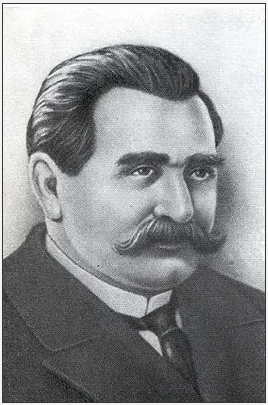 If you’re in the West, you’ve probably heard that Thomas Edison invented the Lightbulb. In fact, the lightbulb had many earlier iterations throughout the 1800s. Many different inventors pioneered incremental steps that led to the modern lightbulb. However, Russian scientist Alexander Lodygin is said to have invented the most modern type of incandescent lightbulb.
If you’re in the West, you’ve probably heard that Thomas Edison invented the Lightbulb. In fact, the lightbulb had many earlier iterations throughout the 1800s. Many different inventors pioneered incremental steps that led to the modern lightbulb. However, Russian scientist Alexander Lodygin is said to have invented the most modern type of incandescent lightbulb.
As per Wiki:
“He invented an incandescent light bulb before Thomas Edison, but it was not commercially profitable. The lamp with a tungsten filament is indeed the only design used now, but in 1906 they were too expensive.”
So, his design was too expensive for the era, but withstood the true test of time. Needless to say, one of the most important inventions of history.
https://rttl.me/2017/09/30/alexander-lodygin-the-russian-who-invented-the-lightbulb/
Furthermore, he invented many other things, including an apparatus which predated scuba equipment:
Several Lodygin's ideas were implemented much later, even after his death. In 1871 Lodygin proposed an autonomous diving apparatus that consisted of a steel mask, natural rubber costume, accumulator battery and a special apparatus for electrolysis of water. The diver was supposed to breathe the oxygen-hydrogen mix obtained by electrolysis of water. The invented diving apparatus was very similar to modern scuba equipment
Telegraph
 Americans are taught that Samuel Morse invented the Telegraph, one of the most important inventions of history which led to the telephone, internet, and global communications. But real history is more complicated than that, and in fact Morse only developed ‘commercial telegraphy’, while Russian inventor Pavel Schilling invented the first electromagnetic telegraph and needle telegraph in the world, setting up a working version in his St. Petersburg apartment.
Americans are taught that Samuel Morse invented the Telegraph, one of the most important inventions of history which led to the telephone, internet, and global communications. But real history is more complicated than that, and in fact Morse only developed ‘commercial telegraphy’, while Russian inventor Pavel Schilling invented the first electromagnetic telegraph and needle telegraph in the world, setting up a working version in his St. Petersburg apartment.
An article on him and his other inventions, including a detailed history of his invention of the telegraph.
There is much nuance to the history of the telegraph, with many researchers claiming credit for advancing various designs which led towards the most modern usage. British inventors Cooke and Wheatstone are sometimes named as the other ‘fathers’ of the telegraph. But it is interesting to note that rumor had it that Wheatstone lectured with a copy of Schilling’s telegraph after he was introduced to it by Georg Muncke, who had himself studied Schilling’s invention during lectures he attended. From wiki:
The Schilling needle telegraph was never used as such, but it is partly the ancestor of the Cooke and Wheatstone telegraph, a system widely used in the United Kingdom and British Empire in the nineteenth century.
In fact, England tried to purchase Schilling’s telegraph long before Cooke and Wheatstone designed their copies.
Solar Power
 Solar Power is all the rage these days. But few in the West would know that the first true working Solar Cell leading to the creation of workable solar power was invented by Russian scientist Aleksandr Stoletov. https://en.wikipedia.org/wiki/Aleksandr_Stoletov
Solar Power is all the rage these days. But few in the West would know that the first true working Solar Cell leading to the creation of workable solar power was invented by Russian scientist Aleksandr Stoletov. https://en.wikipedia.org/wiki/Aleksandr_Stoletov
https://www.inspirecleanenergy.com/blog/clean-energy-101/who-discovered-solar-power/
“In 1888, a scientist from Russia named Aleksandr Stoletov built and patented the first true solar cell.”
https://www.smithsonianmag.com/sponsored/brief-history-solar-panels-180972006/
Three Phase Power
It is widely held that eminent slavic scientist Nikola Tesla was the inventor of the three phase power system that changed the world, leading to modern electrical generation that powers every city and country on the planet. But in fact, Russian inventor Mikhail Dolivo-Dobrovolsky is listed as having independently invented it at the same time, beating Tesla in some of the other important expanded features of the complex system.
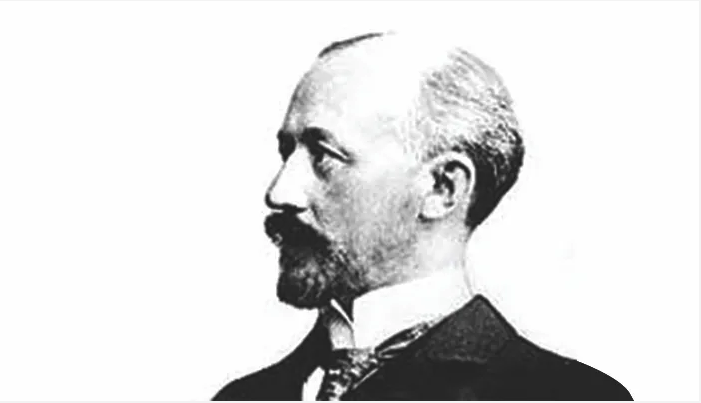 https://www.lindahall.org/mikhail-dolivo-dobrovolsky/
https://www.lindahall.org/mikhail-dolivo-dobrovolsky/
From the above article:
Though that system initially made use of older two-phase generators, the improved efficiency of Dolivo-Dobrovolsky’s system soon made three-phase current the standard around the world.
One of the founders (as Nikola Tesla) of three-phase electrical systems, he [Dolivo-Dobrovolsky] developed the three-phase electrical generator and a three-phase electrical motor (1888) and studied star and delta connections. The triumph of the three-phase system was displayed in Europe at the International Electro-Technical Exhibition of 1891, where Dolivo-Dobrovolsky used this system to transmit electric power at the distance of 176 km with 75% efficiency. In 1891 he also created a three-phase transformer and short-circuited (squirrel-cage) induction motor.
Nuclear Power
Russia built the world’s first working nuclear power plant, which generated and transmitted energy in 1954.
 Source: https://en.wikipedia.org/wiki/Obninsk_Nuclear_Power_Plant
Source: https://en.wikipedia.org/wiki/Obninsk_Nuclear_Power_Plant
“On June 27, 1954, the world's first nuclear power station to generate electricity for a power grid, the Obninsk Nuclear Power Plant, started operations in Obninsk of the Soviet Union. The world's first full scale power station, Calder Hall in the United Kingdom, opened on October 17, 1956. The world's first full scale power station solely devoted to electricity production—Calder Hall was also meant to produce plutonium—the Shippingport Atomic Power Station in Pennsylvania, United States—was connected to the grid on December 18, 1957.”
By the way, it shut down in 2002, never having suffered a single significant incident in its 48 year life span:
The power plant remained active until 29 April 2002 when it was finally shut down. According to Kotchetkov, in its 48 years of operation there were no significant incidents resulting in personnel overdose or mortality, or radioactive release to the environment exceeding permissible limits.
And the U.S. continues to maintain one of the oldest, decaying nuclear reactor fleets in the world:
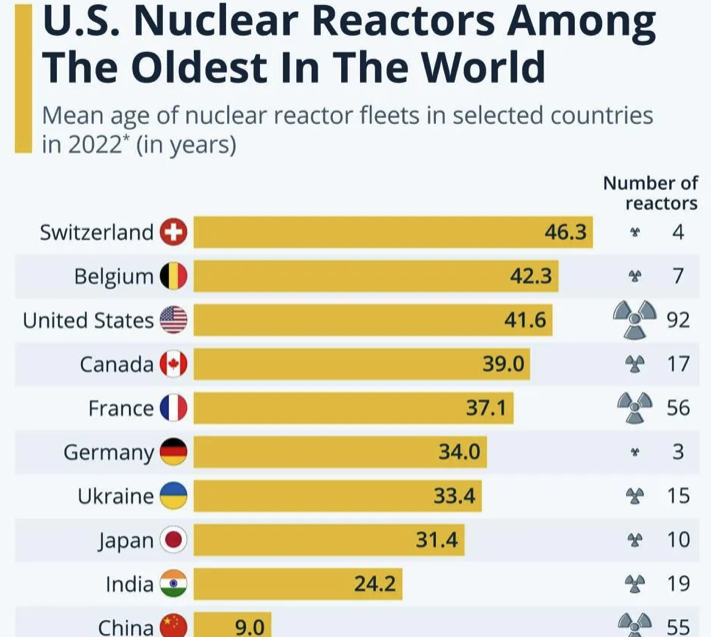
Though Forbes for some reason excludes Russia in the above graphic (out of embarrassment, most likely), this official nuclear agency report lists Russia’s reactors’ average age as 28.9 years, which would put it at the bottom of the list between India and Japan.
Satellite
Almost everyone knows this one. Russia developed the world’s first satellite, the Sputnik I, which flew to orbit in 1957. The U.S. could only manage to send their first satellite to space two years later, in 1959.
With that said, we should fairly note that the first manmade object to ever enter ‘space’ was actually the German V-2 rocket.
The V-2 rocket also became the first artificial object to travel into space by crossing the Kármán line (edge of space) with the vertical launch of MW 18014 on 20 June 1944.
However, the rocket only crossed the disputed ‘Karman line’ which arbitrarily defines the edge of space at an apogee of 176km, and crashed back down to earth without achieving orbital velocity. The Sputnik I achieved an apogee of 939km which is defined as ‘low earth orbit’ and actually orbited the Earth for three months, or 1,440 total orbits. Therefore, by most designations, the German rocket did not even reach ‘low earth orbit’ and is therefore questionable if it even truly ‘went to space’, as that designation itself is arbitrary.
Interestingly, the U.S. took what some call ‘the first image of space’ around the same 100km+ mark, when they sent up a captured German V-2 rocket from White Sands, New Mexico in 1946:
Let’s not forget, though, that none of them would have even gone to space were it not for the seminal breakthroughs of the ‘father of astronautics’, a man without whom rocket flight would not be possible, the earlier mentioned Konstantin Tsiolkovsky.
ICBM
On a similar, but darker, note, the first ICBM (Inter Continental Ballistic Missile) was developed by Russia and launched in 1957. It carried a single nuclear warhead of 3 megatons. From wiki:
The R-7 Semyorka (Russian: Р-7 Семёрка), officially the GRAU index 8K71, was a Soviet missile developed during the Cold War, and the world's first intercontinental ballistic missile.
As a fun fact, a modified version of the world’s first ICBM later served as the launch vehicle for Sputnik I, sending the first man-made satellite into space.
Parachute
Few know that Russian inventor Gleb Kotelnikov was the inventor of the modern parachute, specifically the backpack parachute. Also the braking parachute, used to slow down planes upon landing.
Smithsonian honors him here: https://www.smithsonianmag.com/arts-culture/an-early-history-of-the-parachute-951312/
 Humorously, the Smithsonian writer wonders why it’s not more well-known in the West that a Russian invented the parachute:
Humorously, the Smithsonian writer wonders why it’s not more well-known in the West that a Russian invented the parachute:
Some quick research told that that I owed my life to a Russian actor named Gleb Kotelnikov, who is credited with inventing the first backpack parachute in 1911. Surprisingly little is written about Kotelnikov –at least in English.
Another detailed article on the invention: https://gajitz.com/jump-the-forgotten-inventor-of-the-backpack-parachute/
Holograms
The Russian scientist and inventor Yuri Denisyuk invented the holograph / hologram.
Interestingly, “the development of the laser enabled the first practical holograms that recorded 3D objects to be made.” And as we have already learned, two Russian scientists, Basov and Prokhorov shared the Nobel Prize in 1964 for developing the laser. Just another example of how seminal Russian inventions stack and lead one to another.
Caterpillar Tracks
Russian inventor Dmitry Zagryazhsky was the first to patent the famous ‘tank tracks’ in 1837 but apparently could not get enough funding to build a working prototype as no one believed in his invention at the time, or thought it impractical.
So two years later his patent was voided and ideas taken by others. It was later picked up by another Russian inventor by the name of Fyodor Blinov who, “introduced one of the first tracked vehicles (a wagon on continuous tracks) in 1877 (patented in 1879), and then developed his idea and built the first steam-powered continuous track tractor for farm usage (1881-1888). His self-propelled crawler was successfully tested and displayed at farmer's exhibition in 1896.”
Here is a detailed article on his invention.

https://historical-facts.com/15213752-the-worlds-first-tracked-tractor-and-its-inventor
And another very detailed Russian article which you’ll have to auto-translate.
However, Blinov's tractor was only noticed by German industrialists. The Germans, who expressed a desire to buy a tractor and the rights to its manufacture, Fyodor Blinov refused with the words: "I am a Russian man, I thought and did for Russia."
Assault Rifle
Russian inventor Vladimir Fyodorov invented the world’s first assault rifle, the Federov Avtomat.
Stealth
Many believe stealth was invented in America, given the fact that the F117 Nighthawk was the first mass produced plane that brought it to the forefront. But in fact, stealth was invented by Russian scientistPyotr Ufimtsev, the ‘father of stealth.’ Lockheed Martin appropriated his work and used it as the basis to produce their F117 Nighthawk and B2 Spirit bombers.
https://www.wearethemighty.com/popular/soviet-stealth-scientist-ufimtsev-history/
From wiki:
A stealth engineer at Lockheed, Denys Overholser, had read the publication and realized that Ufimtsev had created the mathematical theory and tools to do finite analysis of radar reflection. This discovery inspired and had a role in the design of the first true stealth aircraft, the Lockheed F-117. Northrop also used Ufimtsev's work to program super computers to predict the radar reflection of the B-2 bomber.
Here’s a documentary on him and his discoveries:
Radar
And since we’re on the topic of stealth, let us mention radar. Although its history is long and tortuous, and the credit isn’t given to any one specific person, the effect of radar was arguably first observed and thus ‘discovered’ by the same Russian scientist who invented radio, Alexander Popov. You can read about the episode here: https://en.wikipedia.org/wiki/History_of_radar
“In 1895, Alexander Stepanovich Popov, a physics instructor at the Imperial Russian Navy school in Kronstadt, developed an apparatus using a coherer tube for detecting distant lightning strikes. The next year, he added a spark-gap transmitter and demonstrated the first radio communication set in Russia. During 1897, while testing this in communicating between two ships in the Baltic Sea, he took note of an interference beat caused by the passage of a third vessel. In his report, Popov wrote that this phenomenon might be used for detecting objects, but he did nothing more with this observation.”
This discovery predated the first basic German naval radar system in 1904.
Russia continued making radar innovations and had many unique radar ‘firsts’ during World War 2, such as what is likely the world’s first airborne radar system, the Gneiss-2, which predated the advent of modern AWACs systems. And also, the first fully production AWACs plane with a modern rotodome in the Tu-126 from the mid-1960s. The U.S. had a Lockheed EC-121 Warning Star earlier, but they did not have rotodomes. An experimental WV-2E version with a rotating AN/APS-70 radar was made in the late 1950s, but I don’t believe it was officially used or mass-produced, and the U.S. did not create their first true AWACs until the E-3 Sentry in the 1970s.
Video and Magnetic Tape Recorders
Alexander M. Poniatoff was a Russian born inventor who emigrated to the U.S. and founded the world famous AMPEX company, after his initials of A.M.P.
The first video recorder was pioneered there, as well as many top advancements in the field of sound recording and magnetic tape, making Ampex a global standard. The first magnetic tape recorder was actually invented in Germany, and Ampex simply appropriated them after the patents were voided due to World War 2. However, Poniatoff put the German designs into first practical use, and under his leadership the company made many trailblazing advancements in these fields, including the first rotary head and videotape recorders.
From Harvard Business School:
Poniatoff, founder of Ampex, created many of the major innovations in commercial recording technology and produced the first US built magnetic audio tape recorder in 1948 revolutionizing the radio industry. After creating the standard for audio recording, Ampex produced the first data instrumentation recorder for storing large amounts of information on tape. In the fifties, Ampex created the first commercial video tape recorder which fundamentally changed the way television programs were staged and produced.
His obituary from the Audio Engineering Society, which describes his early life in Russia:
Geochemistry
Vladimir Verdandsky is considered one of the founders of geochemistry, biogeochemistry, and radiogeology, as well as an important figure in the science of minerology.
He was also instrumental in the popularization of the terms noosphere and biosphere.
From the biosphere wiki:
The biosphere's ecological context comes from the 1920s (see Vladimir I. Vernadsky), preceding the 1935 introduction of the term "ecosystem" by Sir Arthur Tansley (see ecology history). Vernadsky defined ecology as the science of the biosphere. It is an interdisciplinary concept for integrating astronomy, geophysics, meteorology, biogeography, evolution, geology, geochemistry, hydrology and, generally speaking, all life and Earth sciences.
There are many other Russian and Soviet achievements throughout history, but these should do as a timely reminder of all that Russia has to offer to the world.
Now, as we enter into the age of AI, many believe that the U.S. leads the race in innovation. And while that’s true to an extent, it is interesting to note the hidden hand of Russian achievement powering the latest advancements.
I’ve noted before how Google was founded by Russian-born Sergei Brin, and Intel’s Pentium line was designed by Russian-born Vladimir Pentkovski, after whom the Pentium was named. And now, the founder and chief scientist/programmer of the world’s leading AI company, OpenAI—creators of the famous ChatGPT—is of course Russian-born Ilya Sutskever.
And is it any wonder, in light of the topic of Russia’s world-leading human capital, which I’ve brought up before?
International Olympiad in Informatics:
International Collegiate Programming Championships:
Gold medal per year:
Institutions with most wins:
International Mathematical Olympiad:
It goes on and on.
For now, Russia continues to be handicapped by the artificially imposed sanctions, embargoes, and economic terrorism from the West, which keep it from turning into a native technological powerhouse in the fields of computers and AI development. But the human capital is clearly there and waiting for the breakthrough that will come as Russia finally decouples from the West and turns to China, with whose help it will build up its semiconductor (and other) industries.
Until then, on this symbolic date, let us celebrate past achievements, and toast the future victories to come.
If you enjoyed the read, I would greatly appreciate if you subscribed to a monthly/yearly pledge to support my work, so that I may continue providing you with detailed, incisive reports like this one.
Alternatively, you can tip here: Tip Jar
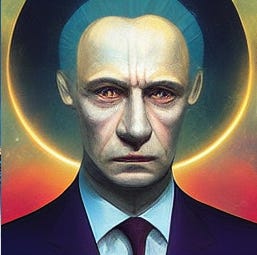 Simplicius The Thinker is Slavic blogger that wishes to remain anonymous. He offers in depth geopolitical and conflict analysis, with a dash of the sardonic. You can support him by pledging here or tipping him at: http://www.buymeacoffee.com/Simplicius
Simplicius The Thinker is Slavic blogger that wishes to remain anonymous. He offers in depth geopolitical and conflict analysis, with a dash of the sardonic. You can support him by pledging here or tipping him at: http://www.buymeacoffee.com/SimpliciusPrint this article

Unfortunately, most people take this site for granted.
DONATIONS HAVE ALMOST DRIED UP...
PLEASE send what you can today!
JUST USE THE BUTTON BELOW

[premium_newsticker id=”211406″]
![]() This work is licensed under a Creative Commons Attribution-NonCommercial 4.0 International License
This work is licensed under a Creative Commons Attribution-NonCommercial 4.0 International License
ALL CAPTIONS AND PULL QUOTES BY THE EDITORS NOT THE AUTHORS







